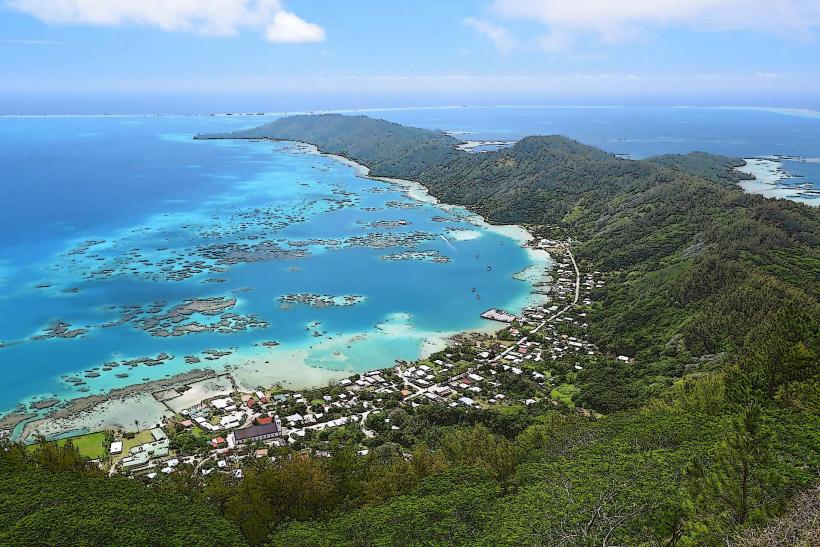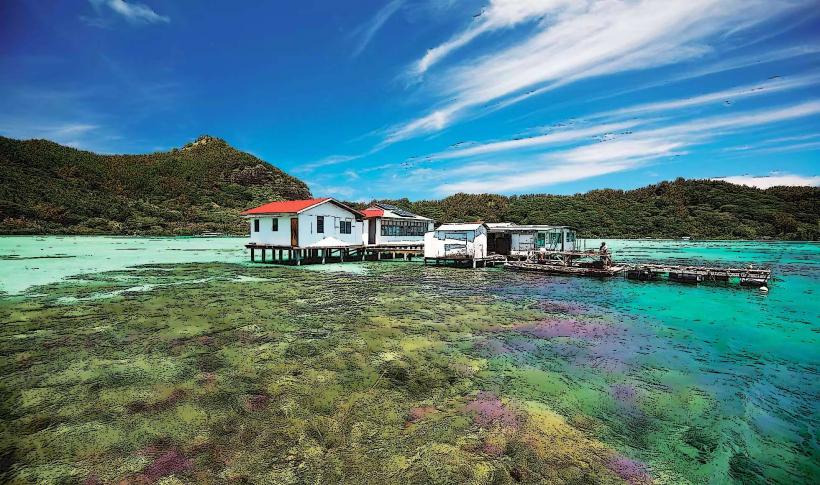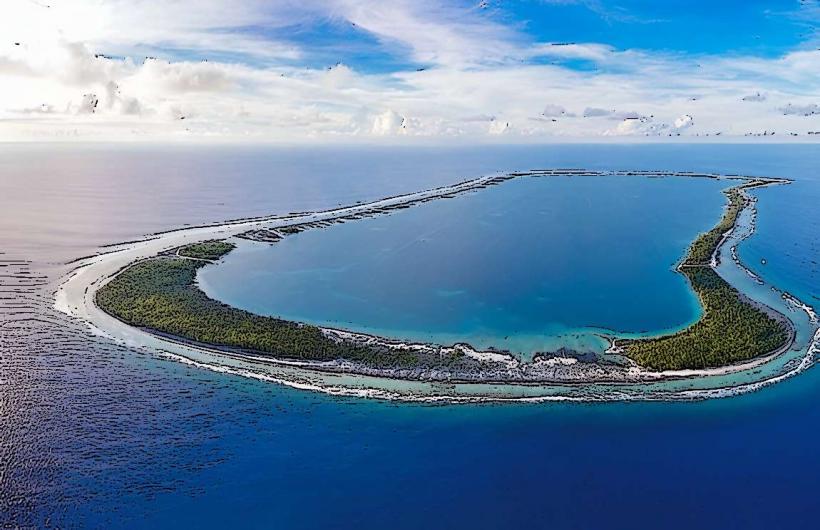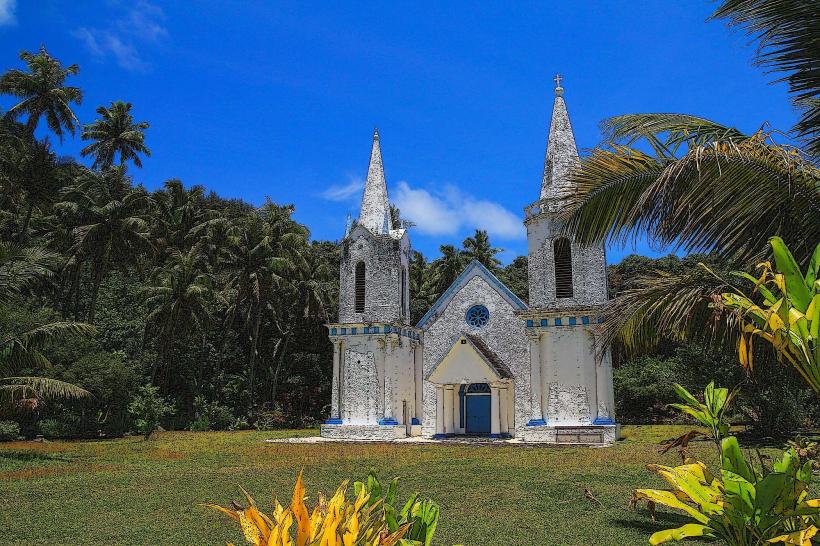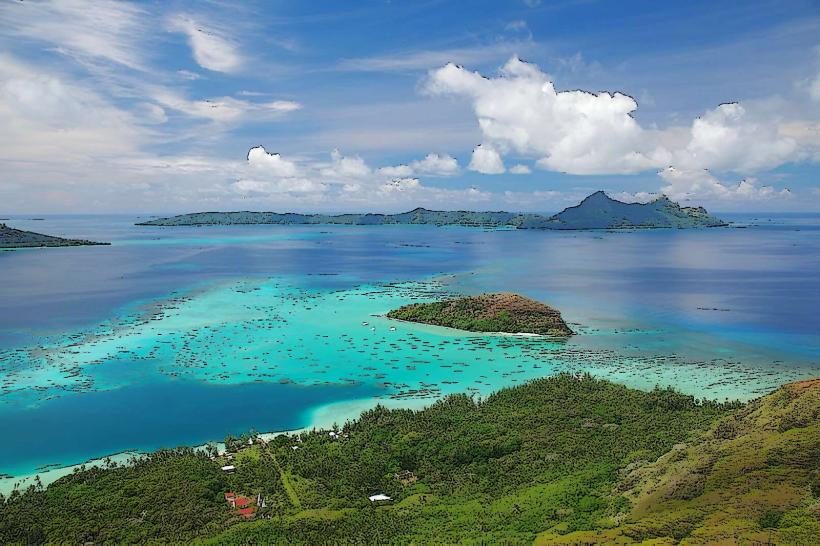Information
Landmark: Gambier Islands LagoonCity: Gambier Islands
Country: French Polynesia
Continent: Australia
The Gambier Islands Lagoon, also known as the Gambier Archipelago Lagoon, is a vast, pristine lagoon surrounding the Gambier Islands in French Polynesia. The lagoon is located in the southern Pacific Ocean, and it is one of the most beautiful and ecologically significant bodies of water in the region. It provides a rich environment for marine life, offers stunning natural beauty, and supports the local economy, particularly through pearl farming and fishing. The lagoon plays a vital role in the ecology, culture, and economy of the islands, and it is a key feature for both residents and visitors to enjoy.
Key Features of the Gambier Islands Lagoon:
Geography and Size:
- The Gambier Islands Lagoon is the central body of water that surrounds the main island of Mangareva, as well as smaller islands and islets in the Gambier Archipelago. The lagoon itself is large, with an area of approximately 200 square kilometers (77 square miles), making it one of the biggest lagoons in French Polynesia.
- The lagoon is enclosed by a barrier reef, creating calm and protected waters ideal for various activities such as snorkeling, scuba diving, fishing, and pearl farming. The water is crystal clear, with hues ranging from turquoise to deep blue, providing breathtaking views of the surrounding islands and marine life.
Marine Life and Biodiversity:
- The Gambier Islands Lagoon is home to a rich variety of marine species, thanks to the warm and nutrient-rich waters. The lagoon supports thriving populations of coral reefs, fish, sea turtles, mollusks, and crustaceans.
- Coral reefs surrounding the lagoon are teeming with colorful fish and invertebrates, making the lagoon a popular destination for snorkelers and scuba divers. Parrotfish, triggerfish, clownfish, and butterflyfish are just some of the species commonly found in these vibrant ecosystems.
- The waters of the lagoon are also an important habitat for marine creatures such as manta rays, moray eels, and turtles, which can often be seen gliding through the lagoon's clear waters.
Pearl Farming:
- The lagoon plays a key role in pearl farming, which is one of the major industries in the Gambier Archipelago. The Gambier Islands Lagoon provides the ideal environment for growing black pearls, as the warm, calm waters, and pristine ecosystem are perfect for the Pinctada margaritifera oysters, which are native to the region.
- The lagoon is dotted with numerous pearl farms that cultivate these precious black pearls. The oysters are nurtured in the lagoon's nutrient-rich waters, and the pearls are carefully harvested after several years of cultivation. The black pearls from this region are highly valued for their unique luster and rich color variations, ranging from dark blues and greens to rare jet blacks.
- The lagoon is integral to the local economy, as the pearl farming industry provides both employment and a major source of income for the local communities. Visitors to the Gambier Islands can also learn about the pearl farming process through tours of the local pearl farms.
Environmental Importance:
- The Gambier Islands Lagoon is an environmentally sensitive area that requires careful management to preserve its delicate ecosystems. The lagoon's coral reefs and marine life are vulnerable to the effects of overfishing, pollution, and climate change.
- Local authorities and organizations are working to protect the lagoon through sustainable practices in pearl farming, marine conservation programs, and ecotourism initiatives. These efforts are aimed at ensuring that the lagoon remains a healthy and thriving habitat for generations to come.
Cultural and Historical Significance:
- The lagoon holds cultural significance for the local inhabitants of the Gambier Archipelago. Mangareva Island, the largest island in the archipelago, has historically been a center of Polynesian culture and Christianity in the region. The lagoon’s pristine waters and surrounding islands have been vital to the survival and livelihood of the local community for centuries.
- The lagoon is also a key feature of local folklore and traditions, with Polynesian customs often linked to the sea and its resources. The islanders rely on the lagoon not only for fishing and pearl farming but also as a place for spiritual connection and cultural practices.
Tourism and Recreation:
- The Gambier Islands Lagoon is a popular destination for visitors seeking a peaceful, remote getaway. It offers pristine beaches, clear waters, and a variety of water-based activities. Snorkeling and scuba diving are particularly popular, as the lagoon is home to vibrant coral reefs and abundant marine life.
- The lagoon also provides an excellent opportunity for kayaking, stand-up paddleboarding, and boat tours, allowing visitors to explore its many islets and secluded coves. Many visitors also enjoy taking scenic boat trips around the lagoon to see the beauty of the surrounding islands and to visit the pearl farms.
- Eco-tourism is a growing industry in the Gambier Islands, and the lagoon’s natural beauty and marine life attract tourists who are interested in experiencing the region’s pristine environment while promoting sustainable practices.
Best Time to Visit:
- The best time to visit the Gambier Islands Lagoon is during the dry season (from May to October), when the weather is typically sunny and ideal for outdoor activities. The wet season (from November to April) can bring more rainfall and higher humidity, but the lagoon’s waters remain warm year-round, making it a potential destination at any time of the year.
Conclusion:
The Gambier Islands Lagoon is a stunning natural treasure that offers breathtaking views, a rich variety of marine life, and a culturally significant environment. Whether you are interested in exploring the vibrant coral reefs, learning about the fascinating process of pearl farming, or simply enjoying the tranquil beauty of this pristine body of water, the lagoon provides an unforgettable experience for nature lovers and eco-tourists alike. The Gambier Islands Lagoon is an integral part of the local community’s livelihood and a key feature in the ecology and cultural heritage of the region.

